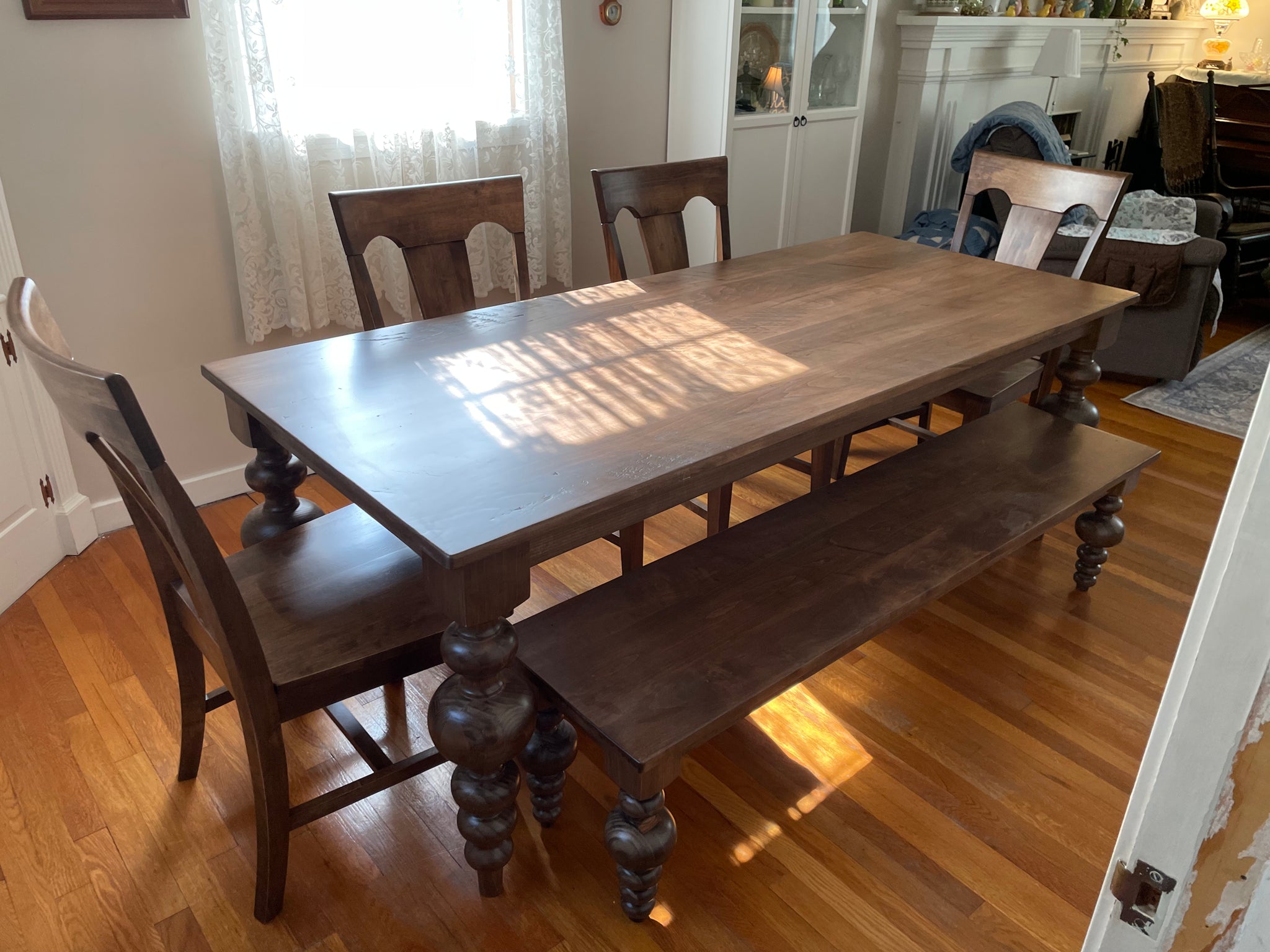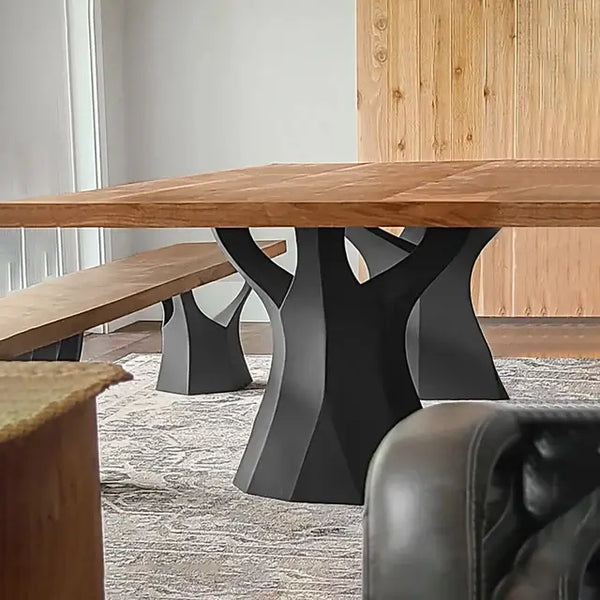Unique Dining Room Table Legs That Will Elevate Your Dining Area
Unique Dining Room Table Legs That Will Elevate Your Dining Area
Blog Article
From Traditional to Modern: Locate the Perfect Eating Room Table Legs for Your Style
While classic styles such as cabriole and transformed legs stimulate a sense of ageless class, modern styles like hairpin and geometric alternatives provide a chance for striking visual rate of interest. As you think about these components, the concern continues to be: just how can you seamlessly integrate these diverse leg styles to develop a harmonious dining experience?
Understanding Table Leg Styles
The selection of dining-room table leg styles can substantially affect both the aesthetic appeals and capability of the space. Each leg design contributes special aesthetic aspects and practical features, dealing with varied layout choices and usage requirements. Recognizing these designs is essential for selecting the right eating table that aligns with your overall interior decoration vision.
As an example, tapered legs provide a tidy, timeless look that can improve a room's elegance, while stand bases give security and make the most of legroom, making them suitable for smaller sized areas. Hairpin legs, a hallmark of mid-century modern-day layout, present a commercial style, allowing for an airy, open feeling. Likewise, trestle legs evoke rustic beauty, giving durable support and a feeling of timelessness.
Additionally, the option of products plays a considerable role. Wood legs can bring warmth and appearance, whereas steel choices frequently share a streamlined, contemporary ambiance. Eventually, comprehending table leg designs is important for developing a cohesive dining location that reflects individual design while ensuring usefulness and convenience. By thoughtfully taking into consideration these elements, you can improve both the practical and visual allure of your dining space.
Typical Table Leg Options
When selecting dining room table legs, typical options commonly personify timeless beauty and workmanship. These layouts mirror a rich heritage and a commitment to top quality, making them suitable for those who value traditional aesthetic appeals.
One of the most renowned conventional leg designs is the cabriole leg, characterized by its stylish curved shape. This style usually includes ornamental carvings and is most typically discovered in Queen Anne and Chippendale furniture. An additional popular option is the turned leg, which boasts a collection of smooth, rounded forms that supply a timeless appearance while preserving stability.
Additionally, the straight leg, while straightforward, offers a tough and unadorned structure that can blend perfectly with a range of tabletop styles. For those attracted to ornate detailing, claw-and-ball feet legs stimulate a feeling of majesty and can work as a sensational centerpiece in any kind of eating area.
Lastly, stand bases, although not purely legs, supply an alternate traditional option that enables sufficient legroom and can be magnificently carved. Each of these typical leg designs contributes to the general atmosphere of a dining-room, weding function with visual allure.

Modern Table Leg Layouts
Modern table leg styles use a diverse series of styles that highlight tidy lines and ingenious materials. These layouts commonly prioritize capability while functioning as striking focal factors within an eating space. Minimal aesthetic appeals are prevalent, with legs crafted from materials such as metal, glass, and crafted wood, which contribute to a ventilated and contemporary feeling.
One prominent layout is the hairpin leg, identified by its slender, conical framework that gives security without overwhelming the tabletop (dining room table legs). This style is frequently located in mid-century contemporary furnishings and can effortlessly complement numerous table forms. Another trend is using geometric forms, where legs might tackle angular or asymmetrical forms, adding visual interest and a touch of creativity

Blending Designs for Special Areas
Often, property owners seek to produce special dining spaces that reflect their individual style by blending various design components. This strategy enables the incorporation of diverse appearances, resulting in a harmonious yet unique setting. Combining a rustic wooden table with sleek, modern steel legs can produce an appealing contrast that raises the room's total charm.
Additionally, incorporating vintage table legs with contemporary table tops can stimulate a sense of background while maintaining a modern-day sensibility. Such mixes not only showcase private taste however also urge creative thinking, allowing house owners to curate a room that feels both individual and welcoming.
Shade plays an important duty in this blending procedure; selecting table legs that enhance or contrast with the existing color pattern can boost visual rate of interest. Whitewashed legs can soften the daring of a dark table surface, producing a balanced visual.
Tips for Picking the Right Legs
Selecting the right table legs is necessary for achieving both performance and aesthetic appeal in your eating space. Begin by considering the overall design of your area. Conventional settings profit from legs that include elaborate makings or turned designs, while contemporary areas might ask for sleek, minimalist designs.
Following, analyze the height and stability of the legs. dining room table legs. Standard eating tables range between 28 to 30 inches in height, so make sure the legs enhance this measurement for comfort. Additionally, robust materials, such as hardwood or metal, can improve security and long life
Evaluate the leg form as well-- choices consist of right, tapered, or pedestal styles. Straight legs use a timeless appearance, while tapered legs can include a touch of style. Pedestal bases provide enough legroom and are optimal for smaller sized rooms.
Conclusion
In recap, choosing the suitable eating space table legs calls for careful factor to consider of both modern-day and typical designs. Typical choices such as cabriole and turned legs provide timeless elegance, while modern-day styles like hairpin and geometric shapes give a modern touch. By integrating leg style, height, and material with the overall design, a cohesive and inviting environment can be attained. Eventually, the selected table these details legs should reflect the wanted aesthetic, enhancing the eating experience within the area.
The range of eating area table leg styles can dramatically affect both the appearances and performance of the area. Ultimately, understanding table leg designs is vital for developing a cohesive dining area that shows individual style while making certain functionality my blog and convenience.One of the most legendary standard leg styles is the cabriole leg, defined by its elegant curved form. Straight legs provide a classic look, while tapered legs can include a touch of beauty.In summary, selecting the optimal dining space table legs calls for careful consideration of both conventional and contemporary designs.
Report this page